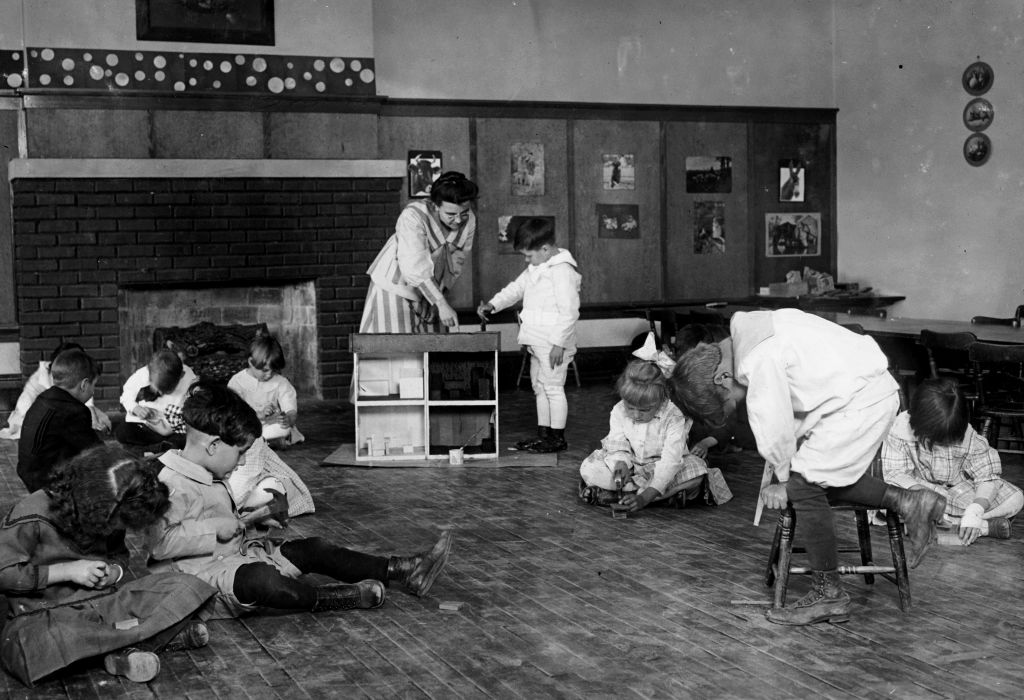
As schools across the country experience book bans and attempts to limit the curriculum, in Texas one group led by the spiritual adviser to former President Donald Trump fought in the past year to bring biblical values to the classroom. In support of such efforts, U.S. Sen. Ted Cruz warned, "there is an evil agenda [and] we are the only thing that stands between the destruction of American or the revival America."
Rather than a new occurrence, efforts to censor teachers, ban books, and control the curriculum are the newest chapter in a century-long battle over who gets to teach their morals and who gets to see themselves represented in public schools. In fact, the belief that schools have a responsibility to teach moral, ethical, and religious values—often encompassed by the term "civic morality"—is older than public schools themselves. Especially in controversial moments in U.S. history, these debates about civic morality in the schools have been enveloped in culture wars. But when pressure is put on schools to change with the ebb and flow of political whim, teachers and students are left with inconsistent curriculum and haphazard structure.
Moral education has roots in colonial America. The Puritans of New England left a thorough record of their efforts to impart civic and religious values to children. Before there were schoolhouses, communities monitored the moral teachings in the home and could even impose criminal penalties for misappropriation or neglect of moral education.
Read More: How Oklahoma Became Ground Zero in the War Over Church-State Separation
In the early 19th century, free and low-cost schools emerged in the northern and middle states for white children to promote “order and democratic harmony.” The National Board of Popular Education, a group founded by Catharine Beecher in 1847 to expand mass education throughout the U.S., sent 600 single women Westward to “insure children in these newly settled territories has access to proper Christian culture.” By replacing the religious education of previous decades, these institutions began to shoulder the responsibility of defining what moral education looked like in public, non-religious environments while heavily relying on what they believed were “universal” Christian values.
More From TIME
By the end of the century, a system of public education was in place that arose from the guiding belief that municipally-supported schools could enhance national cohesion and morality. In the development of this universal public school system, there was power in choosing what the single curriculum would be nation-wide. Indeed, school reformer Horace Mann believed that excluding workers and immigrants “was to weaken the school’s power to serve as a cohesive force in society.” In the name of civic morality, students from more varied backgrounds were included in the singular vision of “Americanism” and taught how to uphold certain behaviors and ideas in these schools.
In the early 20th century, economic and demographic changes reinvigorated debates around education and its role in creating moral citizens. Illustrating xenophobic fear at the time, Congress passed the Immigration Act of 1917 which barred immigrants from many regions of the world but allowed immigrants from Northern and Western Europe. Communities and politicians looked to schools and teachers to integrate and assimilate the nearly 14 million immigrants in the United States at the time. For example, Boston schools centered their moral instruction around the “law of obedience” and Nebraska schools included the extracurricular club “Uncle Sam’s Boys and Girls” to extend moral education outside the formal classroom.
Read More: How the Surveillance of Immigrants Remade American Policing
Beyond Americanization, politicians and community members alike looked to the public schools to pass on other moral codes—essentially lists of virtues presented in the form of pledges. For example, in response to a competition sponsored by the Character Education Association in 1917, William Hutchins’ outlined the “ten laws of right living” including self-control, good health, kindness, sportsmanship, self-reliance, duty, reliability, truth, good workmanship, and teamwork. His “Morality Code” was published in education journals and actively marketed towards superintendents and Commissioners of Education across the U.S.
During World War II and the Cold War, the use of public schools as patriotic propaganda and civic education received wide support. A 1951 education report titled Moral and Spiritual Values in the Public Schools reaffirmed the importance of moral education in the postwar era and simultaneously defined certain values as central to the “American experience.” The report called for a set of courses that would “preserve basic American and Western values at a time when free, democratic societies were threatened by the specter of totalitarianism.” Who fit within these “American ideals,” taught in conjunction with civic morality, were narrowly defined and exclusionary—centering around Anglo-Christian values, at the expense of everyone else.
Such narrowly defined conceptions of morality and citizenship were precisely why the social movements of the 1960s and 1970s prompted reevaluation of moral education in public institutions. In 1978, the intellectual Carl Bereiter declared, “education in the areas of personality and values is never free of authoritarian imposition,” addressing the intrusion of public-school value-based curriculum blurring the separation of church and state. Notably, there were more court cases challenging school practices between 1969 and 1978 than in the previous 50 years combined.
Reform efforts continued to use the language of morality, though. They just redefined it. University of Notre Dame president Father Theodore M. Hesburgh spoke to the inclusion of civil rights as “the concern for civil rights is not just another economic, political, social, or ethnic movement, but there is a deep moral dimension… to achieve full civil rights for all our citizens.”
In the subsequent years, the political demand for moral education persisted, especially as evangelical conservatives prioritized legislative changes to ensure it. Since the 1990s, many states passed legislation requiring some type of moral education in public schools. Indiana, for example, required schools to teach the virtues of honesty, respect for the property of others, and personal responsibility to family and community.
Read More: A Charter School's Racial Controversy Reveals the Battle for America's Classrooms
Questions of civic morality continue to play out today, even as many politicians shroud their calls in the rhetoric of “neutrality.” After Arkansas’ Department of Education warned its high schools not to offer Advanced Placement courses in African American history, calling the curriculum "indoctrination," many schools pushed back and are offering the courses anyway. In Iowa, teachers have been pushed out of the classroom due to required “neutrality” in teaching curriculum.
Using public education to teach universal values and strengthen society has always been central in the development of our education system. Our historical and current problem is that we cannot agree what our nation’s universal values are and who we need to strengthen our society.
Indeed, there is an irony here, and conservative politicians like Cruz are not entirely wrong. Recent evidence suggests that public schools across the nation are not providing an education in civic morality. But the reasons they are not may have more to do with nature of the attacks on the schools by pundits like Cruz and others than anything else. As one RAND study revealed, many teachers are “scared and anxious and worried” about what they can or cannot teach.
Civic morality is needed in our schools today. When taught well, civic education can increase students’ likelihood of voting, concern for community issues, social responsibility, and confidence speaking publicly. But first, doing so requires an expansive definition of “Americanism” to reevaluate what our students—and our society—need to safeguard our future and democracy.
Mallory Hutchings-Tryon is a historian and educator with a decade of experience teaching throughout the country in K-12 secondary public, private, and charter schools. She is currently researching discriminatory dress codes and teaching at the University of Washington. Made by History takes readers beyond the headlines with articles written and edited by professional historians. Learn more about Made by History at TIME here.
More Must-Reads from TIME
- Cybersecurity Experts Are Sounding the Alarm on DOGE
- Meet the 2025 Women of the Year
- The Harsh Truth About Disability Inclusion
- Why Do More Young Adults Have Cancer?
- Colman Domingo Leads With Radical Love
- How to Get Better at Doing Things Alone
- Michelle Zauner Stares Down the Darkness
Write to Mallory Hutchings-Tryon / Made by History at madebyhistory@time.com
